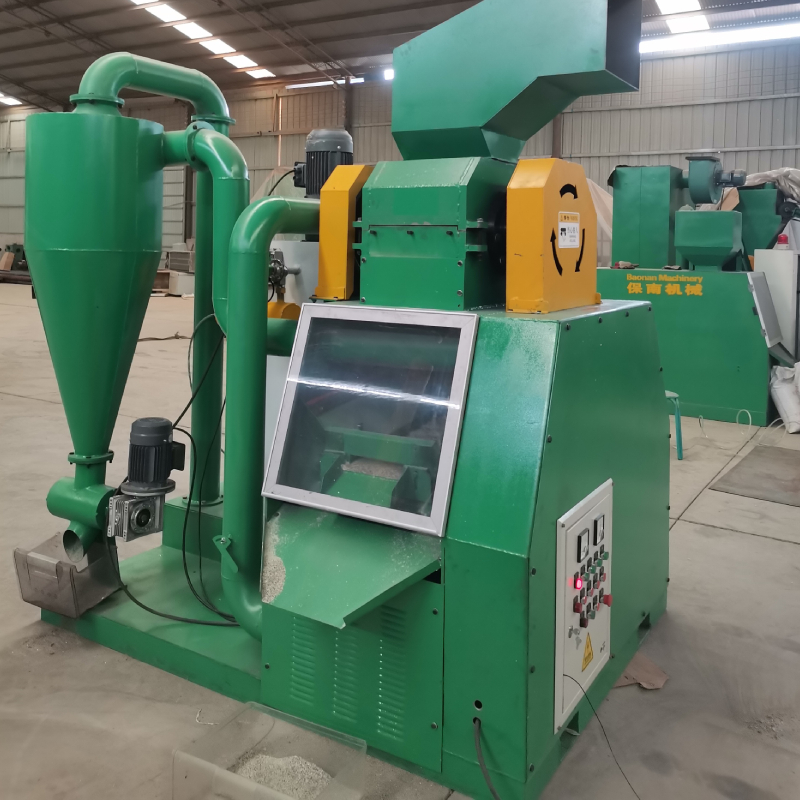

Қар . 16, 2024 00:16 Back to list
The Cost of Setting Up an Aluminium Scrap Recycling Plant
Aluminium scrap recycling has emerged as an essential industry, addressing environmental concerns while providing substantial economic benefits. As the demand for aluminium continues to rise, so does the need for efficient recycling processes. One of the crucial factors influencing this venture is the cost involved in setting up an aluminium scrap recycling plant. This article provides an overview of the various cost components that potential investors should consider.
1. Initial Capital Investment
The primary cost associated with starting an aluminium scrap recycling plant is the initial capital investment. This includes expenses related to purchasing or leasing land, constructing a facility, and acquiring essential machinery and equipment. The size and location of the plant significantly influence these costs. A larger, more technologically advanced facility in a busy industrial area will typically require a higher investment.
Machinery costs can vary based on the type of recycling process employed. Common equipment includes shredders, balers, separators, and furnaces for melting the aluminium. New machinery tends to have higher upfront costs but may offer greater efficiency and lower maintenance expenses over time. On the other hand, purchasing used equipment can reduce initial expenditures, albeit with increased risk of breakdowns and lower efficiency.
2. Operational Costs
Once the plant is up and running, ongoing operational costs will play a significant role in overall expenses. These costs include utilities such as electricity, water, and gas, which are necessary for machinery operation and production processes. Additionally, labour costs should be factored in, as skilled workers are often required to operate the equipment and manage the recycling process.
Transportation costs also represent a critical component of operational expenses. These costs encompass both the collection of scrap aluminium from suppliers and the distribution of recycled products to customers. Strategically locating the plant close to suppliers and markets can help minimize these expenses.

3. Regulatory Compliance and Environmental Costs
The recycling industry is subject to various environmental regulations and compliance requirements. Potential investors must account for these legal obligations when estimating costs. This may include obtaining permits, adhering to waste management guidelines, and implementing measures to minimize emissions and waste generated from the recycling process. Failure to comply can result in hefty fines and legal complications, making it paramount for plant owners to budget for these potential costs.
4. Marketing and Sales
To ensure profitability, a recycling plant must establish a robust marketing strategy. Costs associated with branding, advertising, and participation in industry trade shows can add up. Forming partnerships with manufacturers and distributors is also crucial for securing stable sales channels. Continuous market research is necessary to stay competitive and responsive to industry trends, which can incur additional costs.
5. Return on Investment (ROI)
While the costs of setting up an aluminium scrap recycling plant may seem overwhelming, it is essential to consider the potential return on investment. The global recycling market for aluminium is growing, driven by rising demand for sustainable practices and increasing prices for recycled materials. With proper management and efficient operations, a well-established aluminium recycling plant can become a profitable venture within a few years, providing stable revenue streams and contributing to environmental sustainability.
Conclusion
Investing in an aluminium scrap recycling plant involves significant financial commitment, but it also offers the promise of substantial rewards. By carefully evaluating initial capital investments, operational costs, regulatory compliance, and marketing efforts, potential investors can make informed decisions. With the right planning and management, the recycling of aluminium scrap not only presents an opportunity for profit but also contributes positively to the environment by reducing waste and conserving natural resources.
Latest news
Troubleshooting Common Eddy Separator Problems
NewsJul.04,2025
The Role of Metal Recycling Plants in Circular Economy
NewsJul.04,2025
The Impact of Recycling Line Pickers on Waste Management Costs
NewsJul.04,2025
Safety Features Every Metal Shredder Should Have
NewsJul.04,2025
How Industrial Shredders Improve Waste Management Systems
NewsJul.04,2025
How Cable Granulators Contribute to Sustainable Recycling
NewsJul.04,2025